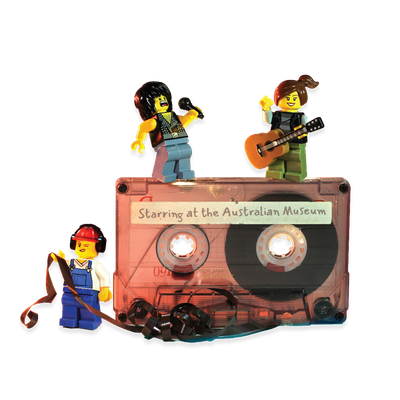Your search returned 56 results
By Page Type
By Tag
- All
- fish (966)
- blog (696)
- fishes of sydney harbour (401)
- First Nations (297)
- Blog (236)
- AMRI (169)
- archives (164)
- Eureka Prizes (145)
- Aboriginal and Torres Strait Islander (135)
- insect (126)
- Ichthyology (124)
- geoscience (109)
- minerals (102)
- climate change (98)
- podcast (94)
- Fish (91)
- Anthropology (89)
- International collections (80)
- Minerals Gallery (78)
- wildlife of sydney (78)
- Labridae (77)
- frog (73)
- gemstone (70)
- photography (65)
- history (63)
- Mollusca (60)
- gem (59)
- staff (59)
- Birds (56)
- Gems (56)
- Indonesia (56)
- education (55)
- shark (55)
- AMplify (54)
- people (53)
- earth sciences (50)
- past exhibitions (50)
- exhibition (49)
- Gobiidae (48)
- sustainability (46)
- Pomacentridae (45)
- Serranidae (44)
- lifelong learning (42)
- science (42)
- Earth and Environmental Science (41)
- Syngnathidae (41)
- Ancient Egypt (40)
- Bali (40)
- bird (40)
- dangerous australians (40)
-
Powerful Owl
https://australian.museum/learn/animals/birds/powerful-owl/The Powerful Owl is Australia's largest owl.
-
Laughing Kookaburra
https://australian.museum/learn/animals/birds/laughing-kookaburra/The Laughing Kookaburra is not really laughing when it makes its familiar call. The cackle of the Laughing Kookaburra is actually a territorial call to warn other birds to stay away.
-
Emu
https://australian.museum/learn/animals/birds/emu/The name 'emu' is not an Aboriginal word. It may have been derived from an Arabic word for large bird and later adopted by early Portuguese explorers and applied to cassowaries in eastern Indonesia. The term was then transferred to the Emu by early European explorers to Australia.
-
Bush Stone-curlew
https://australian.museum/learn/animals/birds/bush-stone-curlew/Bush Stone-curlews were formerly found in the fertile, shale-soiled areas of Sydney - the Cumberland Plain - but are now absent and are listed as threatened in New South Wales because of land clearing practices.
-
Budgerigar
https://australian.museum/learn/animals/birds/budgerigar/Since its introduction into captivity, the Budgerigar (or 'budgie') has been bred into a variety of colour forms, including pure white, blue, yellow, mauve, olive and grey. These colour morphs would not survive in the wild.
-
Bar-tailed Godwit
https://australian.museum/learn/animals/birds/bar-tailed-godwit/Bar-tailed Godwits are the world record holders for non-stop flight: they have been recorded travelling 11,000km from Alaska to New Zealand in only 8 days, flying at an average of more than 50km/h.
-
Discover more
2025 Australian Geographic Nature Photographer of the Year
Special exhibition
Now open -
Discover more
Unfinished Business
Special exhibition
Opens 1 November -
Discover more
Wansolmoana
Permanent exhibition
Open daily -
Find out more
Burra
Permanent kids learning space
10am - 4.30pm![]()
-
Discover more
Minerals
Permanent exhibition
Open daily![]()




